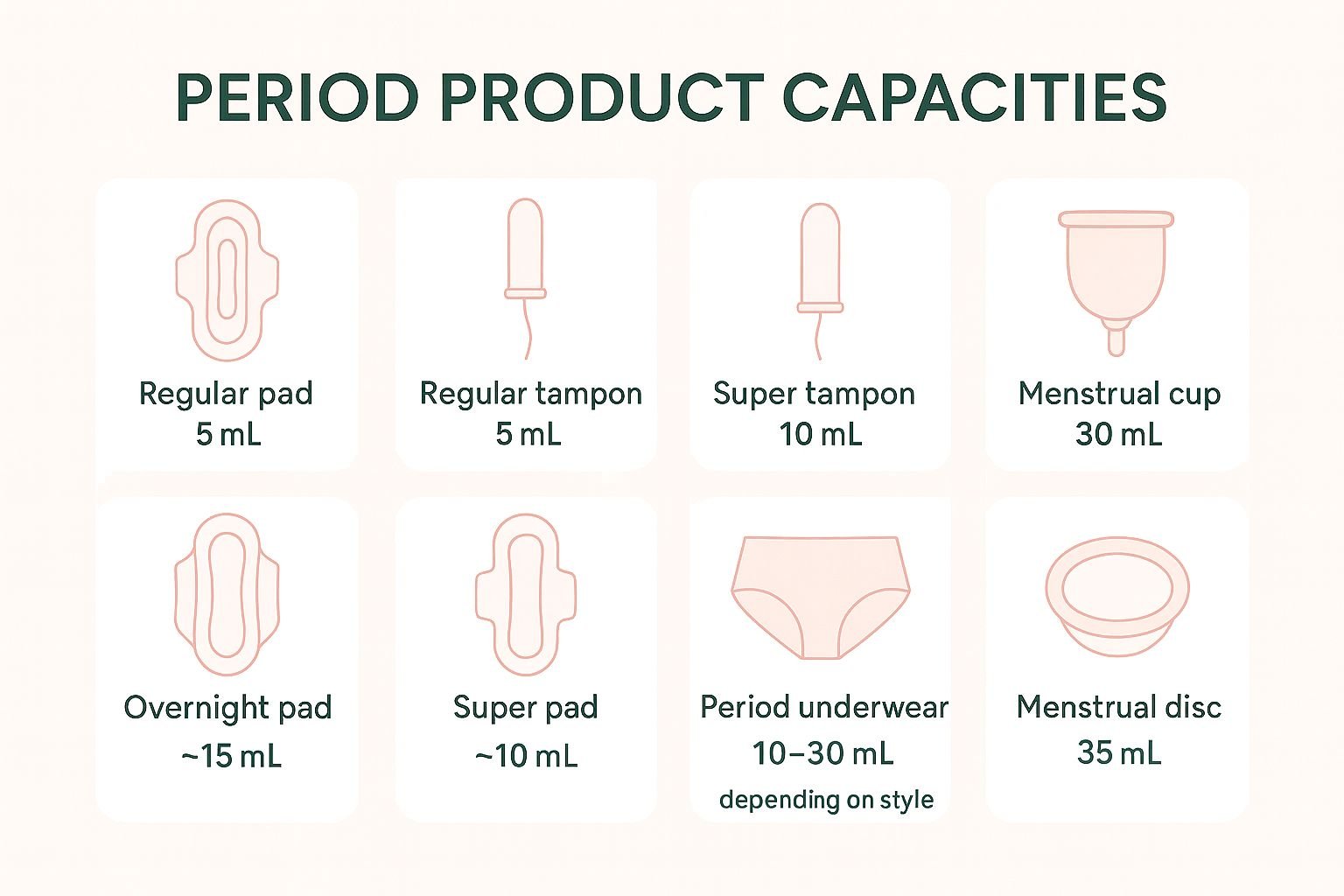Heavy Periods: When to Seek Help and Why They Happen
Heavy Periods Are Common - But Not Normal
If your period is so heavy that you need to plan your day around bathroom access, carry spare clothes, or avoid social activities entirely, you are not alone. Heavy menstrual bleeding (menorrhagia) affects around 1 in 5 women (CDC, 2022). While common, it is not something you should have to just put up with - especially when it is draining your energy, affecting your work or relationships, and making you feel like you lose a week of your life every month.
What Counts as Heavy Menstrual Bleeding?
A typical menstrual cycle involves around 30–50 mL of blood loss (about 2–3 tablespoons) in total. Heavy menstrual bleeding is defined as losing more than ~80 mL (over 5–6 tablespoons) in one period (Cleveland Clinic, n.d.; Mayo Clinic, 2023).
Since measuring blood loss is not practical for most women, here are key signs:
Bleeding longer than 7 days
High flow rate: needing to change pads/tampons every 1–2 hours for several hours in a row
Double protection: using both tampon and pad because one product alone is not enough
Large clots: passing clots larger than 2 cm (about the size of a $1 coin)
Disrupted life: missing work, cancelling plans, or staying close to a bathroom (CDC, 2022)
How Much Blood Does a Pad, Tampon or Cup Hold?
Regular tampon/pad: ~5 mL
Super tampon/pad: ~10 mL
Overnight pad: ~15 mL (varies by brand)
Menstrual cup: ~30 mL
If you are soaking through more than 6–8 fully saturated pads or tampons per day for multiple days, your bleeding is likely heavy (InformedHealth.org, 2020).
Other Symptoms That May Accompany Heavy Periods
Waking at night to change products
Thick, jelly-like clots larger than a $1 coin
Severe pelvic pain or cramps
Fatigue, paleness, lightheadedness, shortness of breath (signs of iron deficiency anaemia) (CDC, 2022; Mayo Clinic, 2023)
Possible Causes of Heavy Periods
Heavy bleeding is a symptom, not a diagnosis. Common causes include:
Hormonal imbalances: polycystic ovary syndrome (PCOS), thyroid disorders, anovulatory cycles
Uterine fibroids or polyps
Adenomyosis or endometriosis
Copper intrauterine device (IUD) use
Medications: anticoagulants, high-dose aspirin
Bleeding disorders such as von Willebrand disease
Chronic illness: thyroid, liver, kidney disease
Pelvic infections or pregnancy-related causes
Rare but serious causes: uterine or cervical cancer (Cleveland Clinic, n.d.; Mayo Clinic, 2023; InformedHealth.org, 2020)
How Heavy Periods Are Diagnosed
Your healthcare provider may recommend:
Detailed menstrual history (including tracking flow and product use)
Physical exam and pelvic assessment
Blood tests: full blood count, ferritin, thyroid function, coagulation profile
Pelvic ultrasound to assess for fibroids, polyps, or adenomyosis
Hysteroscopy (camera to view uterine lining) if indicated (Mayo Clinic, 2023)
Red Flags - When to Seek Medical Advice Immediately
Seek urgent review if you:
Soak through a pad/tampon in under an hour for 2+ hours in a row
Feel dizzy, faint, or have a racing heart during your period
Pass clots larger than a golf ball
Have severe pain with heavy bleeding
Bleed between periods or after intercourse
Have any bleeding after menopause
Suspect you might be pregnant (Mayo Clinic, 2023; Cleveland Clinic, n.d.)
Managing Heavy Periods
Medical and surgical options: tranexamic acid, hormonal therapy, fibroid/polyp removal, or IUD changes.
Nutrition and lifestyle support:
Replenishing iron with haem and non-haem iron sources (and supplements if needed)
Supporting hormone balance through blood sugar control and nutrient-dense eating
Reducing inflammation with anti-inflammatory foods and limiting processed sugar
You Deserve Relief From Heavy Periods
Heavy bleeding can feel exhausting and isolating - but with the right approach, you can get your energy and quality of life back.
📅 Book a free 10-minute discovery consult to discuss your symptoms and create a tailored nutrition plan to support your medical care.
References
Centers for Disease Control and Prevention. (2022). About heavy menstrual bleeding. https://www.cdc.gov/female-blood-disorders/about/heavy-menstrual-bleeding.html
Cleveland Clinic. (n.d.). Menorrhagia (heavy menstrual bleeding): Causes & treatment. https://my.clevelandclinic.org/health/diseases/17734-menorrhagia-heavy-menstrual-bleeding
InformedHealth.org. (2020). Overview: Heavy periods. NCBI Bookshelf. https://www.ncbi.nlm.nih.gov/books/NBK279294/
Mayo Clinic. (2023). Heavy menstrual bleeding - Symptoms and causes. https://www.mayoclinic.org/diseases-conditions/menorrhagia/symptoms-causes/syc-20352829



